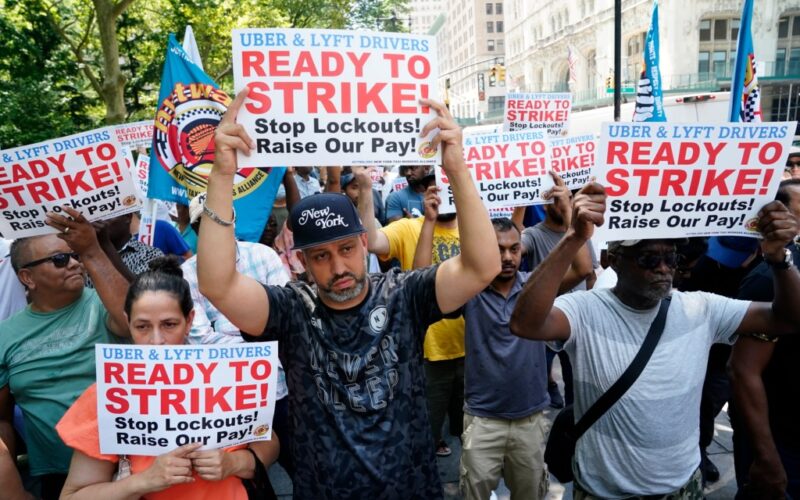Uber and Lyft drivers will get a pay bump and greater protections against lockouts after the Taxi and Limousine Commission passed its updated minimum-pay rule on Wednesday.
The rule, first proposed earlier this year, will modestly raise driver pay by 1%. Combined with a 4% cost-of-living increase passed by the TLC in March, drivers will now make 5% more than they did last year.
But the meat of Wednesday’s vote was a provision within the rule that the TLC says should keep rideshare platforms like Uber and Lyft from arbitrarily kicking drivers off the platform in the middle of their workday for hours at a time — a practice known among drivers as “lockouts.”
“We invented minimum pay for rideshare drivers, and we’ve done more to protect their pay than any city in the nation,” TLC Chairperson David Do said ahead of Wednesday’s vote. “As multibillion-dollar companies have continuously sought to pay them less, the rule we’re voting on today reflects that commitment.”
Uber and Lyft came under fire last year for locking drivers out of the platforms in an effort to control their so-called “utilization rate” — a measure of how often a driver is with a fare, versus logged into the app but without a passenger.
Under the TLC’s minimum-pay rules, drivers are due more pay from the rideshare apps if the industry-wide utilization rate drops below a given rate — a figure both Uber and Lyft have sought to control by keeping drivers from logging on to the app in the first place, often for hours at a time.
Do had previously accused the app companies of using lockouts to manipulate the utilization rate data, effectively suppressing driver pay.
Under the rule passed Wednesday, the apps are required to notify drivers of any planned lockouts 72 hours in advance. Further, the rules prohibit any lockouts within 16 hours of a driver logging on to the app. Firms will be fined $500 for any illegal lockout.
The new rule also allows the TLC to adjust the target utilization rate on the fly in response to trip data, rather than set it annually.
Officials hope the changes will make it harder for apps like Uber and Lyft to try to game the system.

The rule was passed unanimously by the TLC’s board of commissioners, to applause from drivers gathered in the room.
“By rejecting Uber’s manipulated data, the TLC set a precedent and [sent] a clear message to Uber and Lyft that they cannot use lockouts to get their way,” B’hairavi Desai, head of the New York Taxi Workers Alliance, said in a statement.
When the rule was first proposed in January, it would have included a 6% pay bump.
At the time, Uber and Lyft offered vocal opposition to the plan, with Uber threatening to sue and Lyft predicting layoffs of 1,200 drivers.

Both firms were more optimistic on Wednesday.
“It’s good to see the TLC listened to some concerns and tweaked their February proposal,” Lyft spokesman CJ Macklin said in a statement. “While these changes are a step in the right direction, we still have concerns that the underlying pay formula will still deprive drivers of earning opportunities, drive up prices for riders, and reduce ride availability, which isn’t good for anyone — especially the drivers who depend on steady demand to make a living.”
Uber spokesman Josh Gold praised the TLC for its decision to reassess the utilization rate more frequently, claiming that the prior once-a-year adjustment “created perverse incentives, stifled innovation and led to a frustrating, unpredictable experience for drivers.”
Originally Published:








